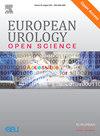Prevalence and Clinical Implications of Post-obstruction Hyperdiuresis Among Patients with Urinary Retention: A Mini Review
IF 3.2
3区 医学
Q1 UROLOGY & NEPHROLOGY
引用次数: 0
Abstract
Urinary retention is a common urological emergency requiring catheterization. However, follow-up management remains poorly defined, particularly regarding post-obstruction hyperdiuresis (POHD), which may lead to complications such as hypovolemia and electrolyte disturbances. Our mini review of PODS identified nine relevant studies involving 665 patients. POHD occurred in 15–78% of cases, with a mean duration of 2–5 d. Risk factors included serum creatinine >105 μmol/l (odds ratio [OR] 4.83, 95% confidence interval [CI] 1.14–20.44; p = 0.032) and greater bladder volume (OR per 100-ml increment: 1.21, 95% CI 1.06–1.40; p = 0.006). Complications included hematuria (11–55%), hyponatremia (22–28%), and hypotension (9%), most of which were self-limiting. Data on management were sparse; one randomized controlled trial showed no significant difference in complications between rapid and gradual decompression. The lack of standardized protocols underscores the need for further prospective studies to optimize patient outcomes.
Patient summary
After relief of urinary obstruction, an increase in urination is common. Complications such as blood in the urine, electrolyte imbalances, and dehydration may occur but typically resolve on their own without additional treatment.
尿潴留患者梗阻后高利尿的患病率及临床意义:一项小型综述
尿潴留是一种常见的泌尿外科急症,需要导尿。然而,随访管理仍然不明确,特别是对于梗阻后的高利尿(POHD),这可能导致低血容量和电解质紊乱等并发症。我们对pod的小型综述确定了涉及665名患者的9项相关研究。POHD发生率为15 ~ 78%,平均病程2 ~ 5 d。危险因素为血清肌酐= 105 μmol/l(优势比[OR] 4.83, 95%可信区间[CI] 1.14 ~ 20.44;p = 0.032)和更大的膀胱容量(每100毫升增加OR: 1.21, 95% CI 1.06-1.40;p = 0.006)。并发症包括血尿(11-55%)、低钠血症(22-28%)、低血压(9%),多数为自限性。管理方面的数据很少;一项随机对照试验显示,快速和渐进式减压在并发症方面无显著差异。标准化方案的缺乏强调了进一步前瞻性研究以优化患者预后的必要性。患者总结:尿路梗阻缓解后,尿量增加是常见的。并发症如尿中带血、电解质失衡和脱水可能发生,但通常不需额外治疗即可自行解决。
本文章由计算机程序翻译,如有差异,请以英文原文为准。
求助全文
约1分钟内获得全文
求助全文
来源期刊

European Urology Open Science
UROLOGY & NEPHROLOGY-
CiteScore
3.40
自引率
4.00%
发文量
1183
审稿时长
49 days
 求助内容:
求助内容: 应助结果提醒方式:
应助结果提醒方式:


